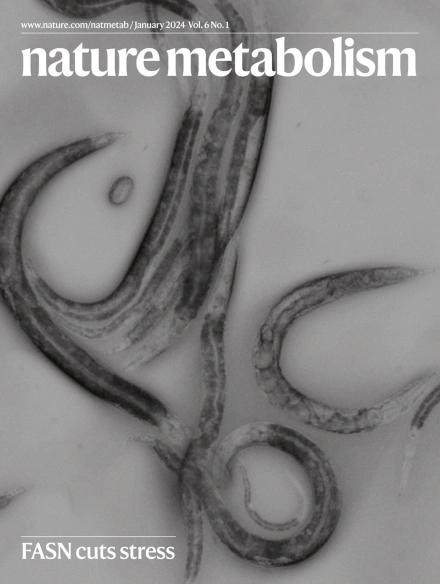Upper-gastrointestinal tract metabolite profile regulates glycaemic and satiety responses to meals with contrasting structure: a pilot study
IF 20.8
1区 医学
Q1 ENDOCRINOLOGY & METABOLISM
引用次数: 0
Abstract
Dietary interventions to combat non-communicable diseases focus on optimizing food intake but overlook the influence of food structure. Here, we investigate how food structure influences digestion. In a randomized crossover study, ten healthy participants were fitted with nasoenteric tubes that allow simultaneous gastric and duodenal sampling, before consuming iso-nutrient chickpea meals with contrasting cellular structures. The primary outcome is gut hormone response. Secondary outcomes are intestinal content analysis, blood glucose and insulin response, subjective appetite changes and ad libitum energy intake. We show that the ‘Broken’ and ‘Intact’ cell structures of meals result in different digestive and metabolomic profiles, leading to distinct postprandial gut hormones, glycaemia and satiety responses. ‘Broken’ meal structure elicits higher glucose-dependent insulinotropic peptide, glucagon-like peptide-1 and blood glycaemia, driven by high starch digestibility and a sharp rise in gastric maltose within 30 min. ‘Intact’ meal structure produces a prolonged release of glucagon-like peptide-1 and peptide-YY, elevated duodenal amino acids and undigested starch at 120 min. This work highlights how food structure alters upper gastrointestinal nutrient-sensing hormones, providing insights into the adverse effects of modern diets on obesity and type 2 diabetes. ISRCTN registration: ISRCTN18097249. In this randomized crossover pilot study, the authors collected human gastrointestinal digesta using a unique intubation technique to compare how meals with contrasting cellular structures affect postprandial luminal metabolites, glycaemia, gut hormones and satiety sensation.


上消化道代谢物谱调节血糖和饱腹反应的膳食结构对比:一项试点研究
防治非传染性疾病的饮食干预措施侧重于优化食物摄入,但忽视了食物结构的影响。在这里,我们研究食物结构如何影响消化。在一项随机交叉研究中,10名健康参与者在食用具有不同细胞结构的等营养鹰嘴豆餐之前,安装了鼻肠管,允许同时对胃和十二指肠进行取样。主要结果是肠道激素反应。次要结局是肠道内容物分析、血糖和胰岛素反应、主观食欲变化和随意能量摄入。我们发现,食物的“破碎”和“完整”细胞结构会导致不同的消化和代谢组学特征,从而导致不同的餐后肠道激素、血糖和饱腹感反应。在高淀粉消化率和胃麦芽糖在30分钟内急剧上升的驱动下,“破碎”的膳食结构会引起更高的葡萄糖依赖性胰岛素肽、胰高血糖素样肽-1和血糖。“完整”的膳食结构使胰高血糖素样肽-1和肽- yy的释放时间延长,十二指肠氨基酸和未消化淀粉的含量升高。这项工作强调了食物结构如何改变上消化道营养感应激素,为现代饮食对肥胖和2型糖尿病的不利影响提供了见解。ISRCTN注册号:ISRCTN18097249。
本文章由计算机程序翻译,如有差异,请以英文原文为准。
求助全文
约1分钟内获得全文
求助全文
来源期刊

Nature metabolism
ENDOCRINOLOGY & METABOLISM-
CiteScore
27.50
自引率
2.40%
发文量
170
期刊介绍:
Nature Metabolism is a peer-reviewed scientific journal that covers a broad range of topics in metabolism research. It aims to advance the understanding of metabolic and homeostatic processes at a cellular and physiological level. The journal publishes research from various fields, including fundamental cell biology, basic biomedical and translational research, and integrative physiology. It focuses on how cellular metabolism affects cellular function, the physiology and homeostasis of organs and tissues, and the regulation of organismal energy homeostasis. It also investigates the molecular pathophysiology of metabolic diseases such as diabetes and obesity, as well as their treatment. Nature Metabolism follows the standards of other Nature-branded journals, with a dedicated team of professional editors, rigorous peer-review process, high standards of copy-editing and production, swift publication, and editorial independence. The journal has a high impact factor, has a certain influence in the international area, and is deeply concerned and cited by the majority of scholars.
 求助内容:
求助内容: 应助结果提醒方式:
应助结果提醒方式:


